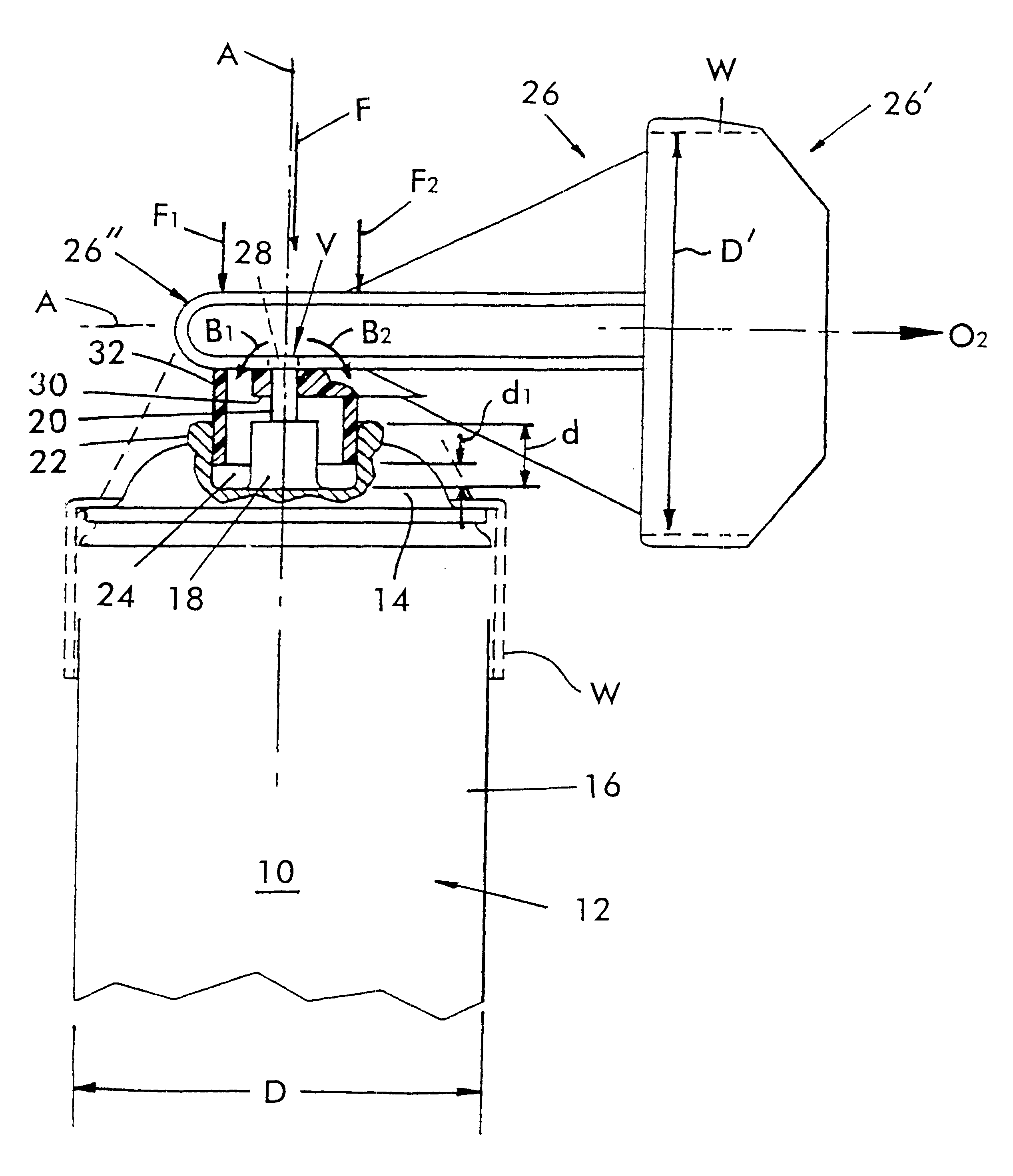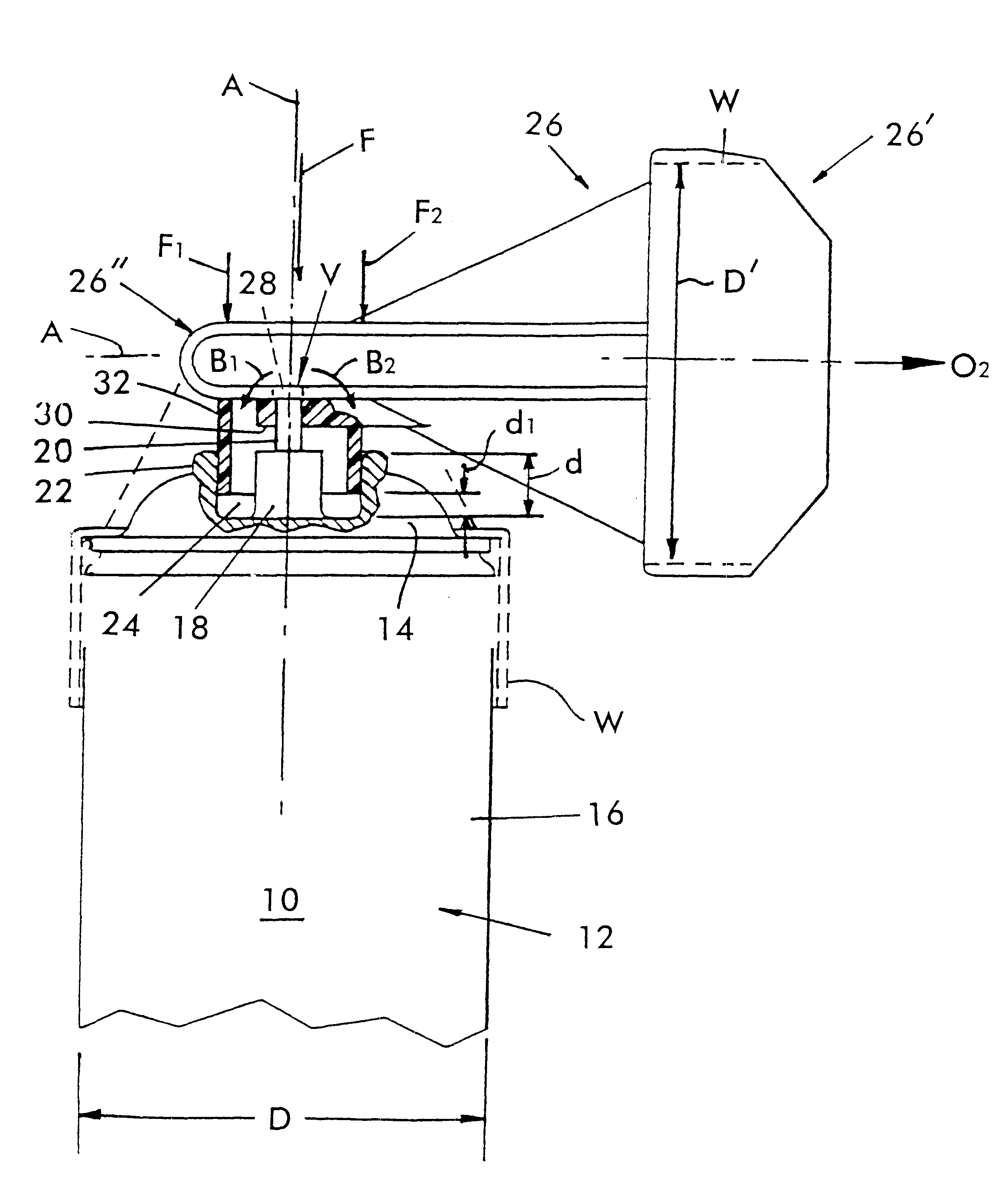Portable oxygen dispenser
a dispenser and oxygen technology, applied in the field of inhalers, can solve the problems of bending, damage to the stem of the canister, and the need to discard the contents, etc., and achieve the effects of reducing the risk of damage or breakage, and being convenient to us
- Summary
- Abstract
- Description
- Claims
- Application Information
AI Technical Summary
Benefits of technology
Problems solved by technology
Method used
Image
Examples
Embodiment Construction
Referring now to the FIGURE, a portable oxygen dispenser in accordance with the present invention for providing an emergency supply of oxygen-rich gas is generally designated by the reference numeral 10.
The dispenser 10 includes a closed aerosol container or cannister 12. The cannister 12 is generally a right cylindrical cannister having a circular cross section defining a cannister axis A. The cannister 12 has a top closure portion in the form of a top wall 14 and a cylindrical side wall 16 defining a cannister diameter D and contains a quantity of oxygen-rich gas in a pressurized condition.
A conventional dispensing orifice 18 is formed in the top wall 14 which includes an externally actuatable valve V at one axial end of the cannister, as shown in the FIGURE, for maintaining the dispensing orifice in a normally closed condition. Such dispensing orifice or valve is well known and is used with conventional aerosol cannisters or containers for dispensing various substances, typically...
PUM
 Login to View More
Login to View More Abstract
Description
Claims
Application Information
 Login to View More
Login to View More - R&D
- Intellectual Property
- Life Sciences
- Materials
- Tech Scout
- Unparalleled Data Quality
- Higher Quality Content
- 60% Fewer Hallucinations
Browse by: Latest US Patents, China's latest patents, Technical Efficacy Thesaurus, Application Domain, Technology Topic, Popular Technical Reports.
© 2025 PatSnap. All rights reserved.Legal|Privacy policy|Modern Slavery Act Transparency Statement|Sitemap|About US| Contact US: help@patsnap.com


